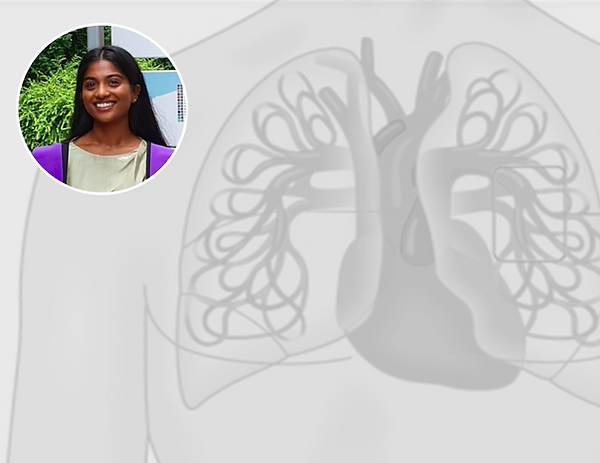Journal of Health and Medical Sciences
ISSN 2622-7258




Published: 03 September 2021
Pulmonary Embolism Detection in COVID-19 Patients
Priyancaa Jeyabaladevan, Sharenja Jeyabaladevan
Havering and Redbridge University Trust, Chelsea and Westminster Hospital NHS Foundation Trust

Download Full-Text Pdf
10.31014/aior.1994.04.03.178
Pages: 50-57
Keywords: Coronavirus Disease 2019, COVID-19, Pulmonary Embolism, CTPA
Abstract
Background: A clinically important impact of Coronavirus Disease 2019 (COVID-19) is the increased likelihood of thromboembolism, mainly pulmonary embolism (PE). To screen for these complications a biochemical marker, D-dimer, is usually done. There is a plethora of research validating the use of D-dimer cutoff levels in non-COVID-19 patients, however less so in the COVID-19 population. Aim: To determine the number of suspected COVID patients with D-dimer ≥ 0.5 and PE reported on CTPA. Methods: Non-interventional single-centre retrospective clinical correlational study. Patient cohort was patients admitted with suspected COVID-19 over a 5-week period. N=690. Results: 76.5% of suspected COVID-19 patients were PCR positive. 40% of these patients had a CTPA completed with 19% reported to have a PE. 52% of patients had a D-dimer value ≥ 0.5 10.6% patients had a PE with a D-dimer ≥ 0.5. Conclusion: Nationally, hospitals are adopting existing D-dimer cut off levels to rule out PEs, however this leads to a large proportion of admitted COVID-19 patients having possibly unnecessary computed tomography pulmonary angiogram. This study highlights that majority of patients with D-dimers above the cut off level have negative PEs and contributes to the notion that standard D-dimer cutoffs are insufficiently accurate to be used as a standalone test in diagnosis in the context of an underlying SARS-CoV-2 infection.
References
Schulman, Sam et al. “Venous Thromboembolism in COVID-19.” Thrombosis and haemostasis vol. 120,12 (2020): 1642-1653. doi:10.1055/s-0040-1718532
Al-Ani F, Chehade S, Lazo-Langner A. Thrombosis risk associated with COVID-19 infection. A scoping review. Thromb Res. 2020;192:152–160.
Huang C, Wang Y, Li X.Clinical features of patients infected with 2019 novel coronavirus in Wuhan, China Lancet 2020395(10223):497–506
Chen N, Zhou M, Dong X.Epidemiological and clinical characteristics of 99 cases of 2019 novel coronavirus pneumonia in Wuhan, China: a descriptive study Lancet 2020395(10223):507–513.
Danzi G B, Loffi M, Galeazzi G, Gherbesi E. Acute pulmonary embolism and COVID-19 pneumonia: a random association? Eur Heart J. 2020;41(19):1858
Minet C, Potton L, Bonadona A. Venous thromboembolism in the ICU: main characteristics, diagnosis and thromboprophylaxis. Crit Care. 2015;19:287.
Malato A, Dentali F, Siragusa S. The impact of deep vein thrombosis in critically ill patients: a meta-analysis of major clinical outcomes. Blood Transfus. 2015;13(04):559–568.
Abou-Ismail M Y, Diamond A, Kapoor S, Arafah Y, Nayak L. The hypercoagulable state in COVID-19: Incidence, pathophysiology, and management. Thromb Res. 2020;194:101–115.
Qin C, Zhou L, Hu Z. Dysregulation of immune response in patients with COVID-19 in Wuhan, China. Clin Infect Dis. 2020;71(15):762–768.
Levi M, van der Poll T, Büller H R. Bidirectional relation between inflammation and coagulation. Circulation. 2004;109(22):2698–2704.
Xu X W, Wu X X, Jiang X G. Clinical findings in a group of patients infected with the 2019 novel coronavirus (SARS-Cov-2) outside of Wuhan, China: retrospective case series. BMJ. 2020;368:m606.
Vaughan C J, Cronin H, Ryan P M, Caplice N M. Obesity and COVID-19: a Virchow's triad for the 21st century. Thromb Haemost. 2020 doi: 10.1055/s-0040-1714216.
CRICS TRIGGERSEP Group (Clinical Research in Intensive Care and Sepsis Trial Group for Global Evaluation and Research in Sepsis) . Helms J, Tacquard C, Severac F. High risk of thrombosis in patients with severe SARS-CoV-2 infection: a multicenter prospective cohort study. Intensive Care Med. 2020;46(06):1089–1098.
Terpos E, Ntanasis-Stathopoulos I, Elalamy I. Hematological findings and complications of COVID-19. Am J Hematol. 2020;95(07):834–847.
Tang N, Li D, Wang X, Sun Z. Abnormal coagulation parameters are associated with poor prognosis in patients with novel coronavirus pneumonia. J Thromb Haemost. 2020;18(04):844–847.
Cui S, Chen S, Li X, Liu S, Wang F. Prevalence of venous thromboembolism in patients with severe novel coronavirus pneumonia. J Thromb Haemost. 2020;18(06):1421–1424.
Jin S, Jin Y, Xu B, Hong J, Yang X. Prevalence and impact of coagulation dysfunction in COVID-19 in China: a meta-analysis. Thromb Haemost. 2020 doi: 10.1055/s-0040-1714369.
Middeldorp S, Coppens M, van Haaps T F. Incidence of venous thromboembolism in hospitalized patients with COVID-19. J Thromb Haemost. 2020;18(08):1995–2002.
van der Hulle T, Cheung WY, Kooij S, et al. Simplified diagnostic management of suspected pulmonary embolism (the YEARS study): a prospective, multicentre, cohort study. Lancet 2017;390:289-297.
Rosovsky RP, Grodzin C, Channick R, et al.Diagnosis and Treatment of Pulmonary Embolism During the Coronavirus Disease 2019 Pandemic: A Position Paper From the National PERT Consortium. Chest 2020; 158:
2021. [online] Available at: <https://www.mdcalc.com/years-algorithm-pulmonary-embolism-pe#next-steps> [Accessed 8 August 2021].
Mouhat B, Besutti M, Bouiller K, et al. Elevated D-dimers and lack of anticoagulation predict PE in severe COVID-19 patients. Eur Respir J 2020; 56: 2001811. doi:10.1183/13993003.01811-2020
